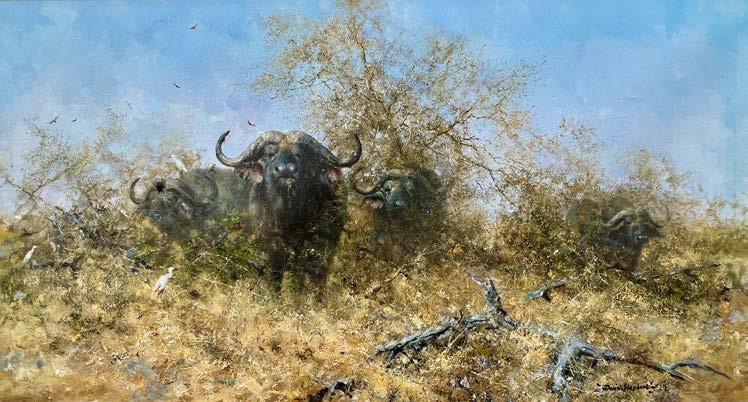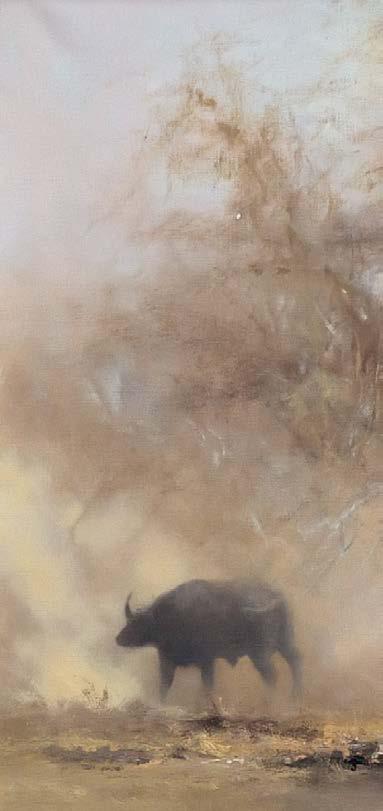
2 minute read
Clarissa James
Austrian, (Contemporary)
Inspired by Edward Burne-Jones and the Pre-Raphelites, Clarissa James is a classically trained artist with an interest in both the Renaissance and nineteenth century techniques of realistic representation.
Clarissa’s love for drawing and painting was first inspired by a visit to the Watts Gallery near Guildford, an artists’ village dedicated to the work of the Victorian era painter and sculptor George Frederic Watts. She followed this initial impulse by researching drawing techniques in the London museums, where she became particularly interested by the the Pre-Raphelites, and pursued an anatomy course at the University College London Medical School.
In 1997, Clarissa moved to Florence to train at the prestigious Florence Academy of Art, an art teaching institution renowned for its commitment to the academic tradition. From there she went on to spend several summers at the studio of renowned Norwegian painter Odd Nerdrum and has since taught both Renaissance and nineteenth-century drawing techniques and the highly skilful technique of silverpoint drawing.
Clarissa is renowned for her life-size figurative works, which depict contemplative figures, often self-portraits, deep in thought or meditative states of mind. Her mesmerizing paintings of birds, peacocks, cranes and falcons, depicted against opulent hues of gold or silver, reveal the nineteenth-century aesthetic influences on her work.
Clarissa is drawn to silence and contemplation, and following a trip to the Far East she developed a great interest in the simplicity and clarity of Japanese art and design. This combined with her lifelong passions for fabrics, opulent textures and nineteenth-century aesthetic, results in unique paintings which are rich, meditative and calm.
Specific in her craft as an artist, Clarissa grinds her own paints to achieve a more unusual luminosity and texture. Her immaculate use of gold leaf brings a spiritual nature to her work and often her elaborate depictions of birds feathers and fabrics are embellished to create a tapestry or jewel like effect and bring a third-dimension into her oil paintings.
David Shepherd
British, (1931-2017)
“I find it hard to describe my feelings at that moment when I saw African elephants in the wild for the very first time. I had made childhood visits to zoos or circuses like other kids, but this was different. I was on my own two feet and there were two hundred elephants in front of me. Nevertheless, it was an exhilarating feeling. I don’t know whether I was afraid. I imagine not as it was all so new and exciting, and I wonder if even then I began to feel the affinity for these marvellous, gentle animals which was to develop so strongly. I know I will never forget the sight of those two hundred elephants browsing completely free and undisturbed. I felt so small, very small indeed. I was hooked forever.”
- David Shepherd
Egrets and Friends
Painted in 2001
Oil on Canvas

40.5 x 76 cms / 16” x 30”
David Shepherd
British, (1931-2017)
Provenance
Private Collection, USA. Gladwell & Patterson, London; acquired in 2022.
Collection, USA. Gladwell & Patterson, London; acquired in 2022.
David Shepherd
British, (1931-2017)
Dusty Buffalo
Painted in 1967
Oil on Canvas
71 x 112 cms / 28" x 44"

Provenance
Private Collection, USA.
Gladwell & Patterson, London; acquired from the above in 2022.

December Morning, Cornwall
Painted circa 1913
Oil on canvas
51 x 61 cms / 20” x 24”








